Main menu
Common skin conditions

NEWS
Join DermNet PRO
Read more
Quick links
Author: Dr Harmony Thompson, Medical Registrar, Waikato Hospital, Hamilton, New Zealand. DermNet Editor in Chief: Adjunct A/Prof Amanda Oakley, Dermatologist, Hamilton, New Zealand. Copy edited by Gus Mitchell. June 2020.
Dermoscopy is a non-invasive technique used to examine skin lesions with a dermatoscope. It is also known as dermatoscopy, epiluminescence microscopy, incident light microscopy, and skin-surface microscopy [1,2].
A dermatoscope usually consists of a light source, achromatic lens, contact plate, and power supply. A dermatoscope allows better visualisation of deeper skin structures, therefore improved diagnostic accuracy of skin lesions.
There are three main modes of dermoscopy [1,2]:
Polarised and nonpolarised dermoscopy are complementary and the combination of both methods increases diagnostic accuracy and clinician confidence.
To understand the difference between the different modes of dermoscopy, it is important to know the basic physics of light, refraction, and reflection.
Reflection of light
Refraction of light
A light wave is an electromagnetic wave; it can be thought of as an oscillating form that vibrates in multiple directions.
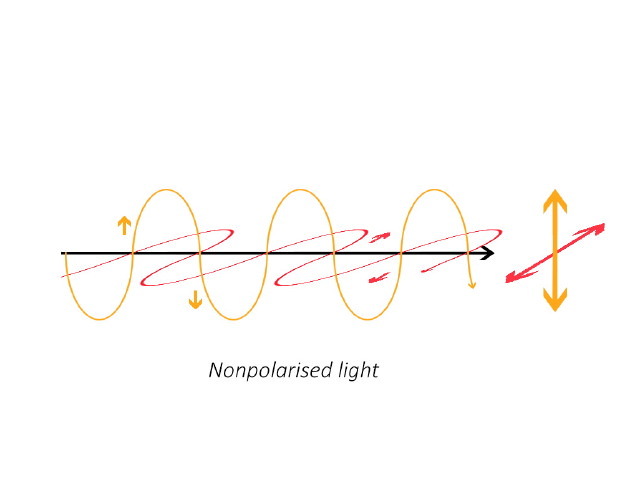
Nonpolarised light
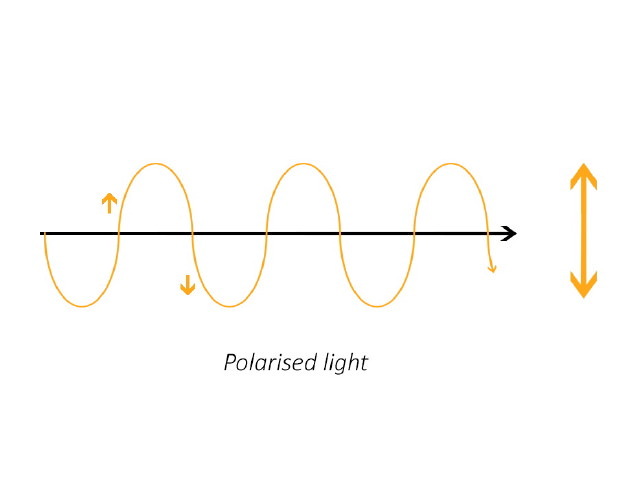
Polarised light
Polarisation of light
The process of transforming nonpolarised light to polarised light is known as polarisation.
Most light sources, such as the sun, lamps, and torches, are nonpolarised. As the light hits the surface of the skin, it is absorbed, refracted, and reflected. Nonpolarised light can undergo polarisation by reflecting off nonmetallic surfaces, creating specular reflectance (glare). Glare reduces the ability of our eyes to see the underlying structures.
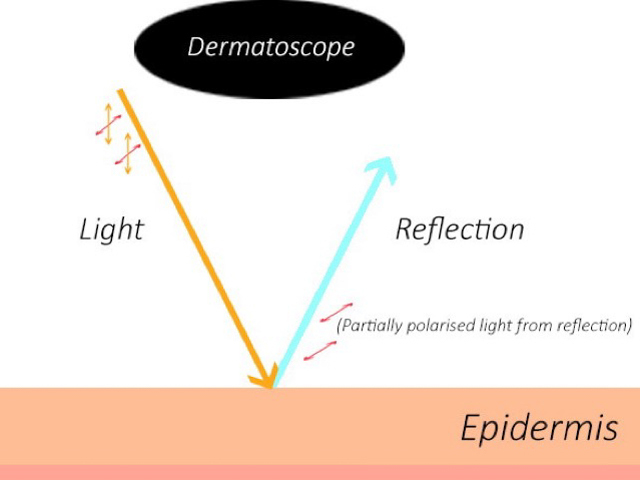
Normal light reflection off skin
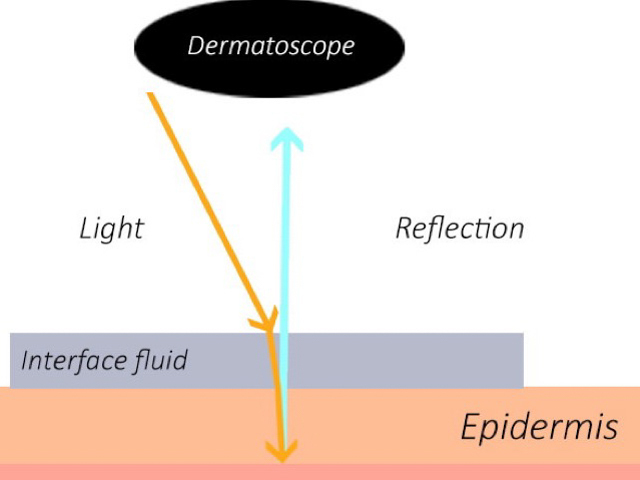
Nonpolarised dermoscopy
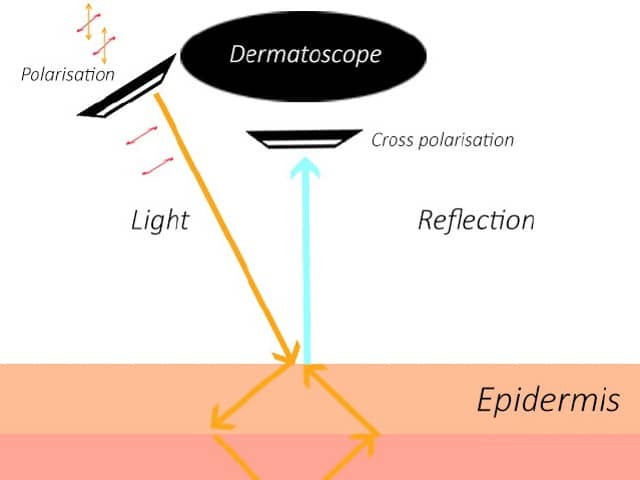
Polarised dermoscopy
Different modes of dermoscopy produce similar results. However, there are minor differences in the appearance of cutaneous structures and colours [3]. Skin structures with high concordance between polarised and nonpolarised dermoscopy (described using conventional pattern analysis) include [4]:
Structures with lower concordance between polarised and nonpolarised dermoscopy include [4]:
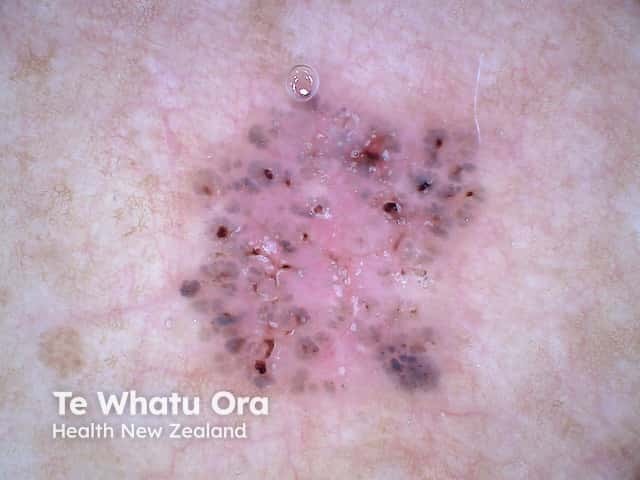
Nonpolarised dermoscopy of pigmented basal cell carcinoma
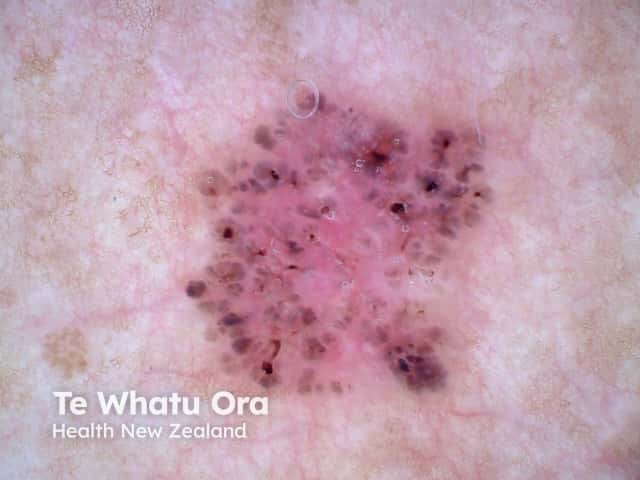
Polarised dermoscopy of pigmented basal cell carcinoma
See more images of polarised and nonpolarised light in dermoscopy images.
Polarised dermoscopy can be used to view deeper layers (the dermo-epidermal junction and superficial dermis).
Nonpolarised dermoscopy is used to view superficial layers (the superficial epidermis to the dermo-epidermal junction).
Polarised dermoscopy does not require skin contact or fluid immersion.
Nonpolarised dermoscopy always requires skin contact and fluid immersion.
Polarised dermoscopy is better at showing variable pigmentation, dermal vessels, pink/red colours, and white shiny structures.
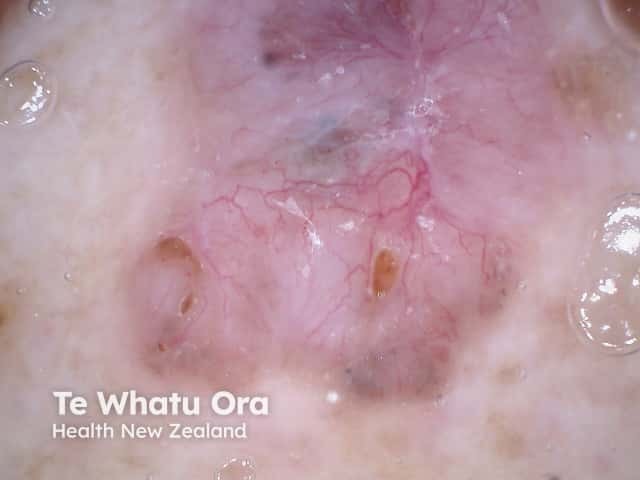
Nonpolarised dermoscopy of pigmented basal cell carcinoma
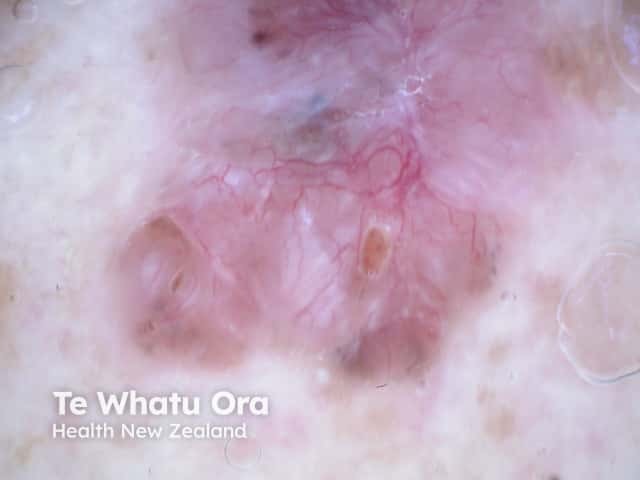
Polarised dermoscopy of pigmented basal cell carcinoma
Nonpolarised dermoscopy is better at showing blue-white colours, peppering, milia-like cysts, and comedo-like openings.
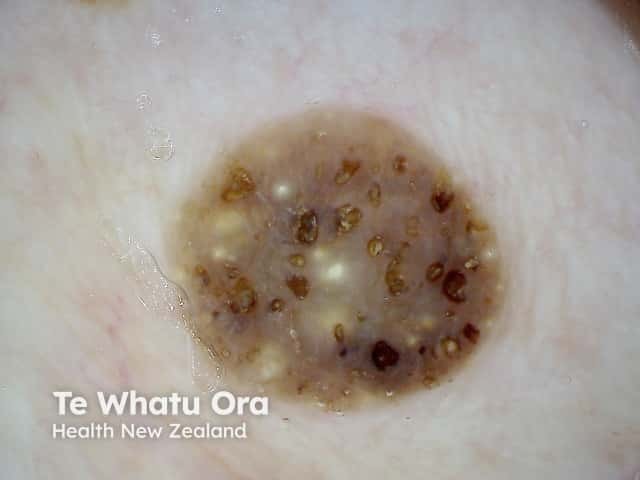
Nonpolarised dermoscopy of seborrhoeic keratosis
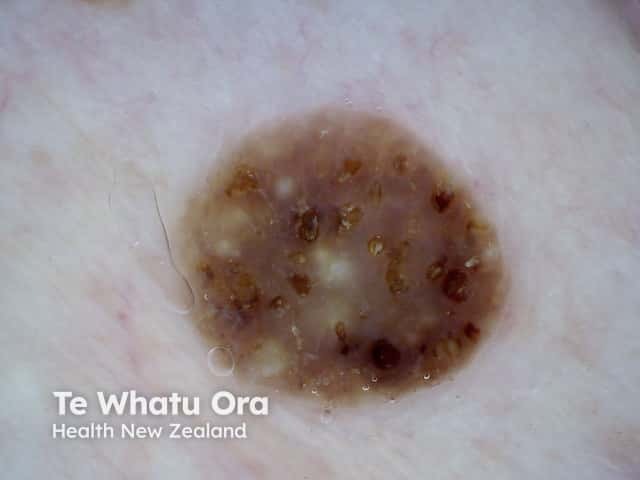
Polarised dermoscopy of seborrhoeic keratosis
On the palms and soles, nonpolarised dermoscopy is better at showing eccrine duct openings and pigment in the furrows.
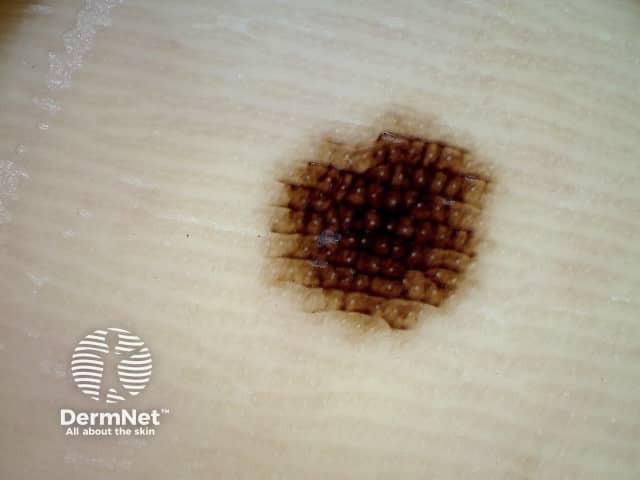
Acral naevus, nonpolarised dermoscopy view
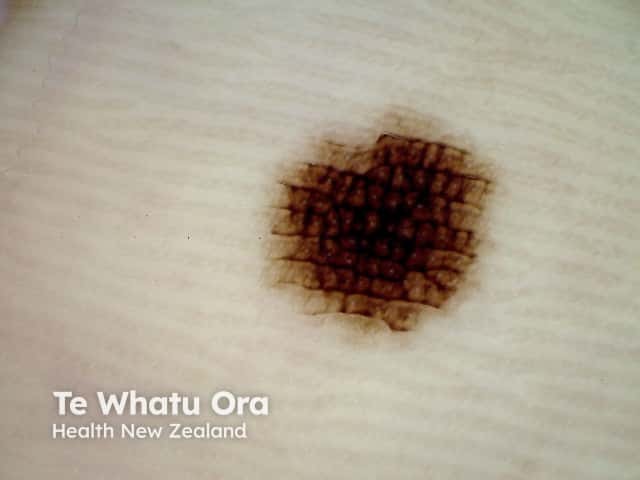
Acral naevus, polarised dermoscopy view
Polarised dermoscopy has increased sensitivity for detecting amelanotic melanoma or structure-poor melanoma and basal cell carcinoma.
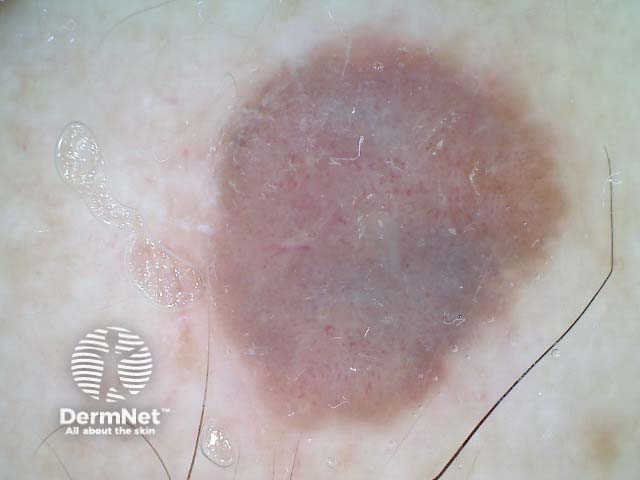
Nodular amelanotic melanoma nonpolarised dermoscopy view

Nodular amelanotic melanoma polarised dermoscopy view
Polarised dermoscopy is better at visualising dermatofibroma, BCC, some cases of melanoma, and squamous cell carcinoma (SCC).
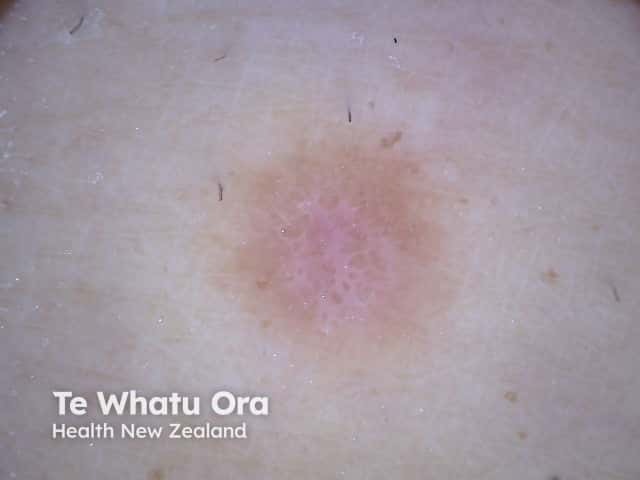
Nonpolarised dermoscopy of dermatofibroma
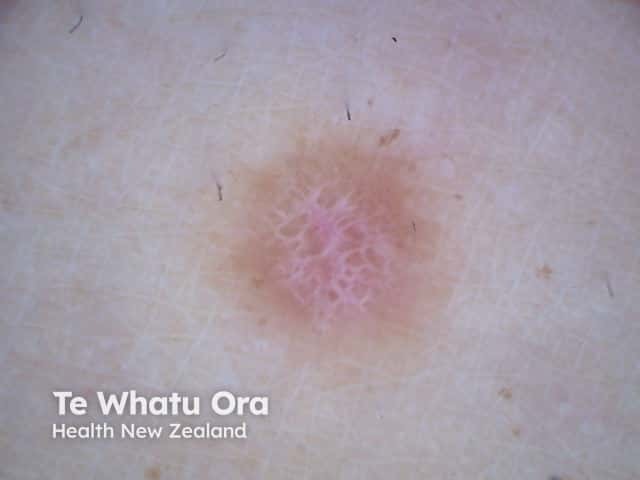
Polarised dermoscopy of dermatofibroma

Nonpolarised dermoscopy of basal cell carcinoma
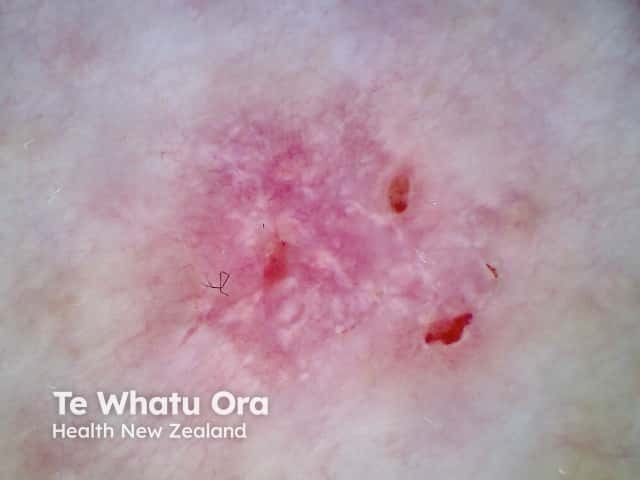
Polarised dermoscopy of basal cell carcinoma
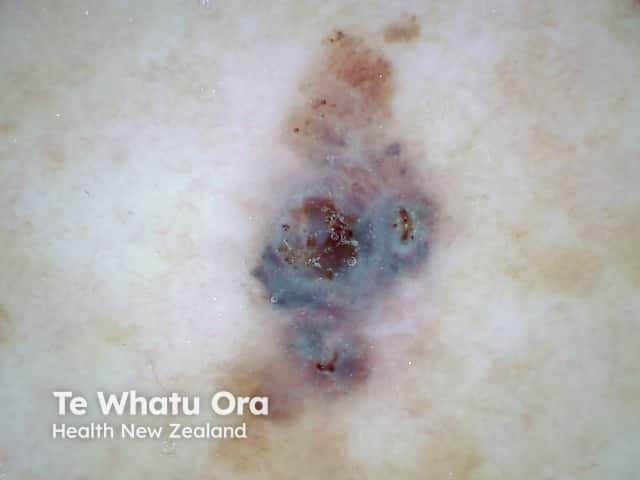
Nonpolarised dermoscopy of a pigmented melanoma
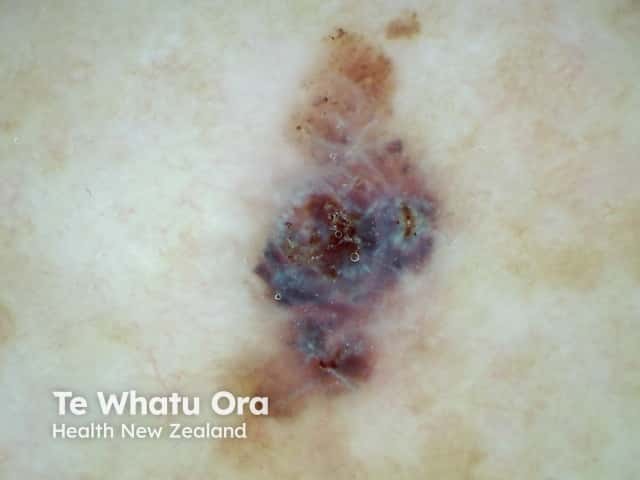
Polarised dermoscopy of melanoma
Nonpolarised dermoscopy has increased specificity for seborrhoeic keratosis and is better at visualising acral lesions.
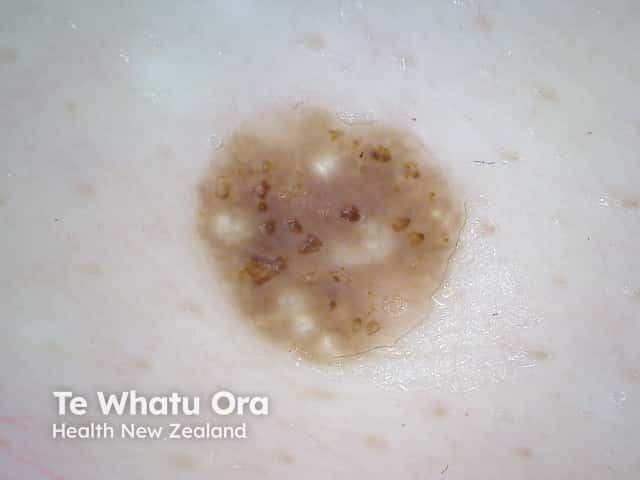
Nonpolarised dermoscopy of seborrhoeic keratosis
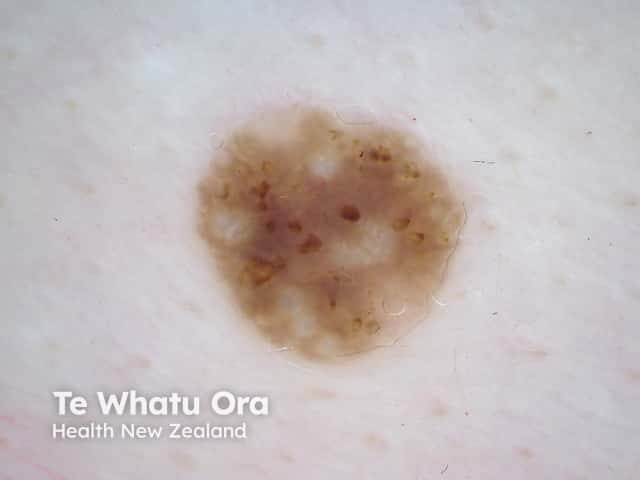
Polarised dermoscopy of seborrhoeic keratosis
Either method can be used to diagnose most skin lesions; they provide complementary information.